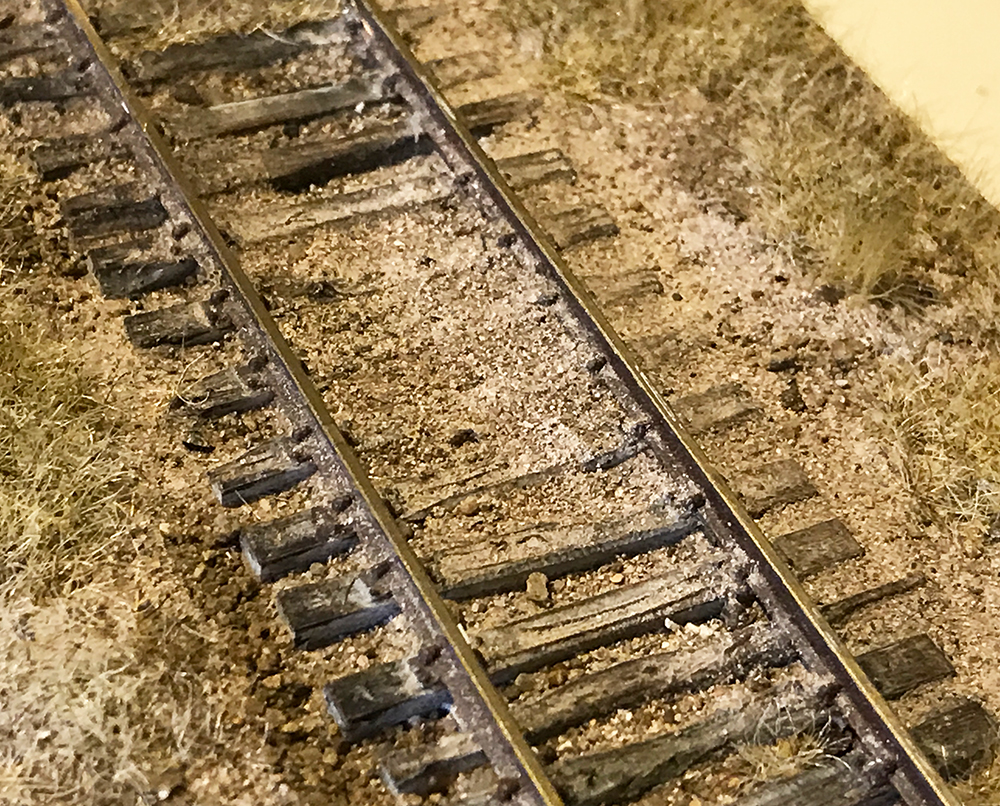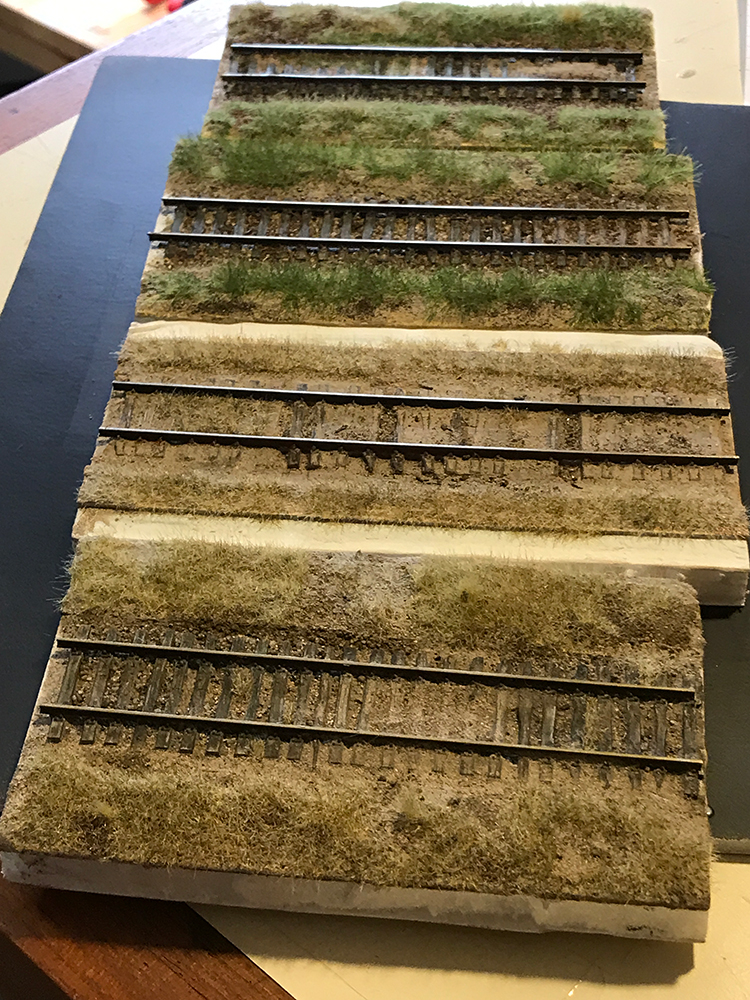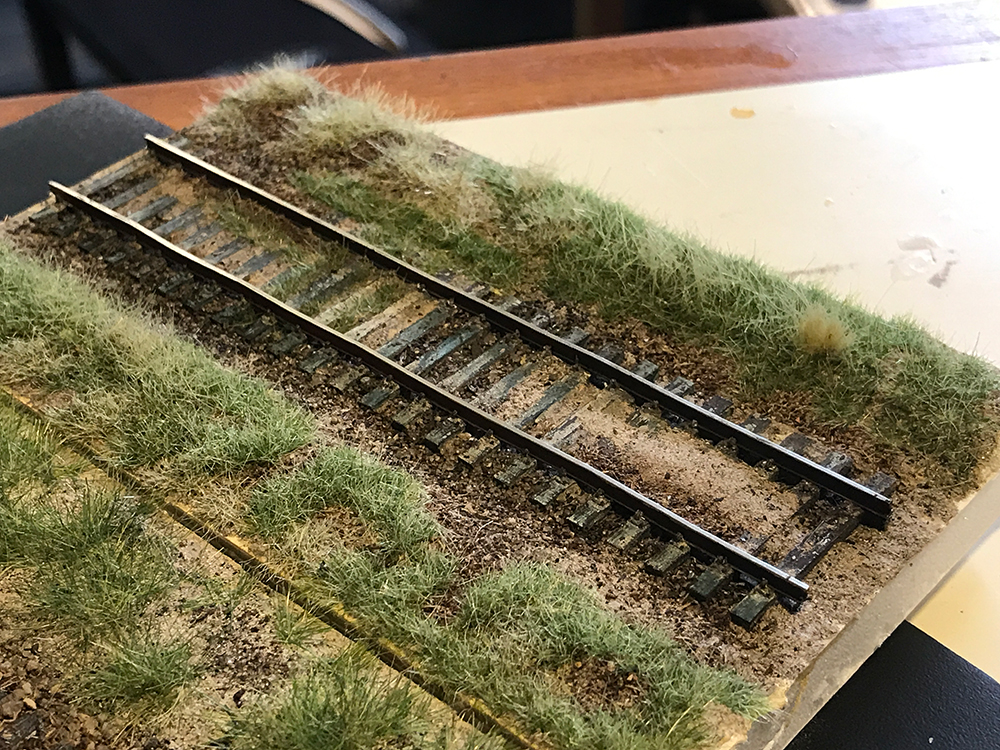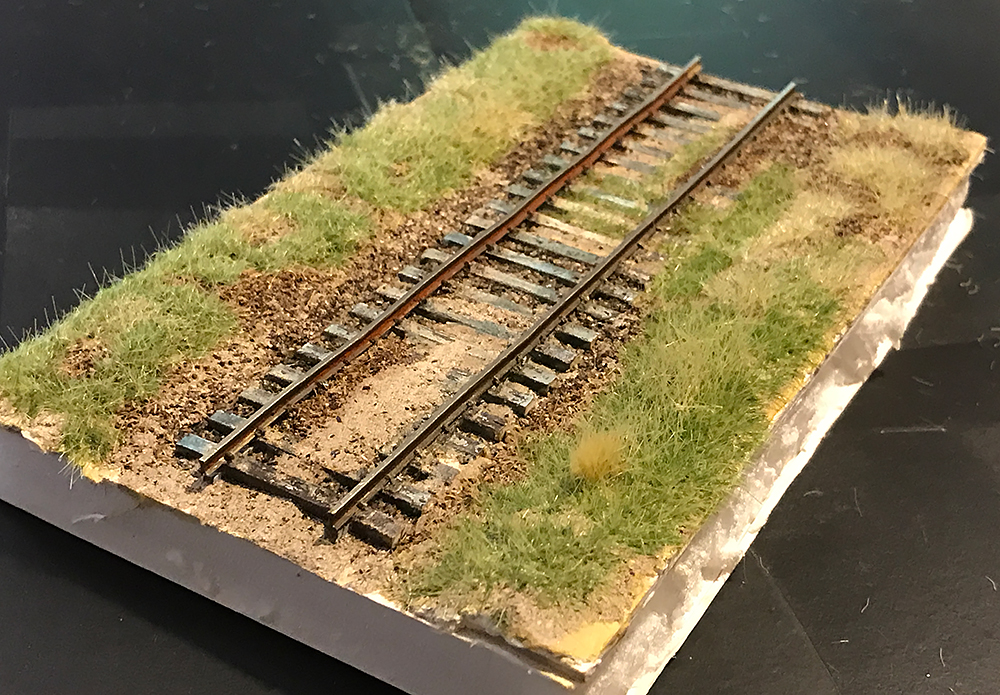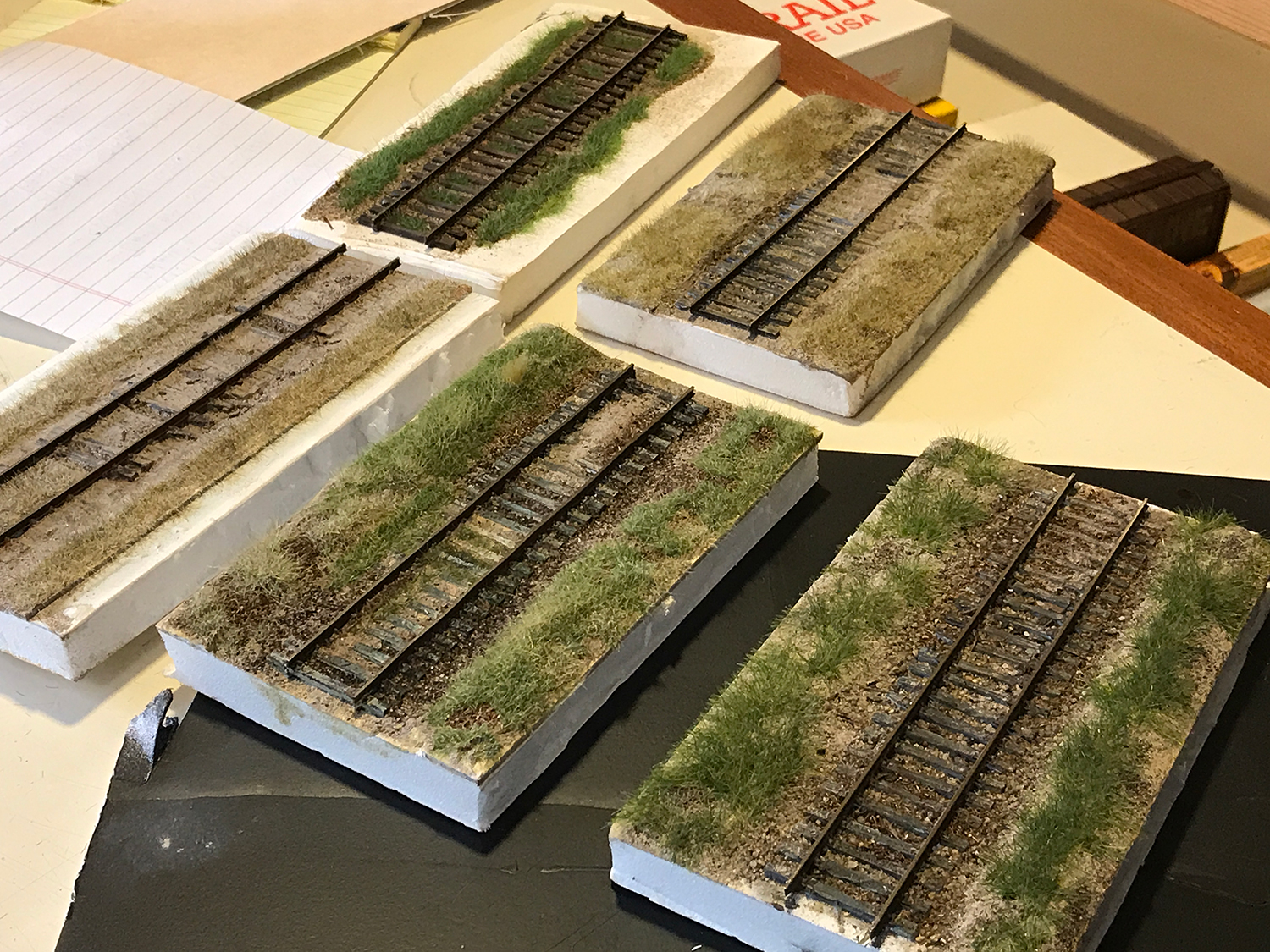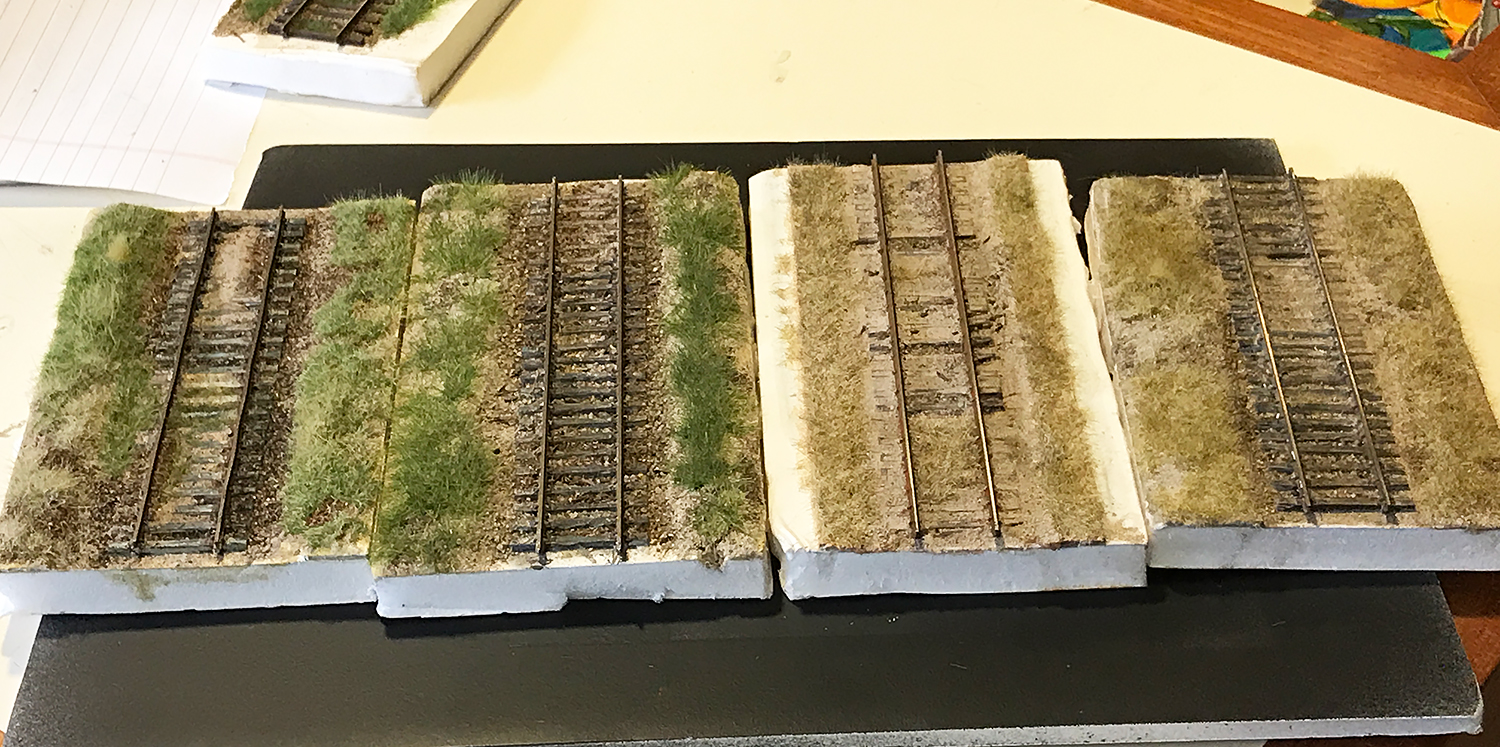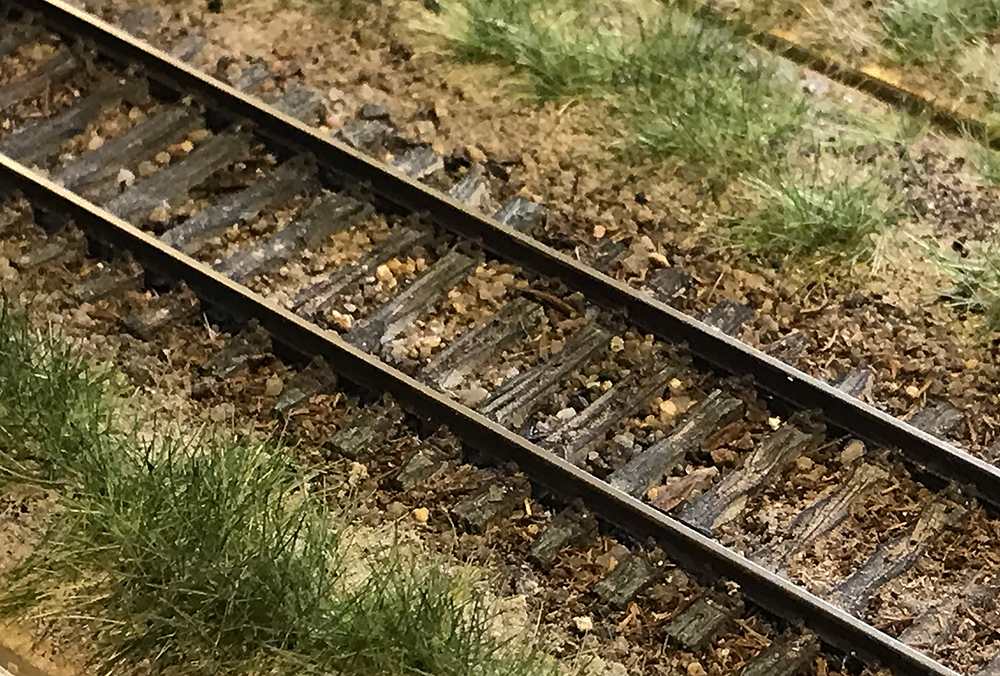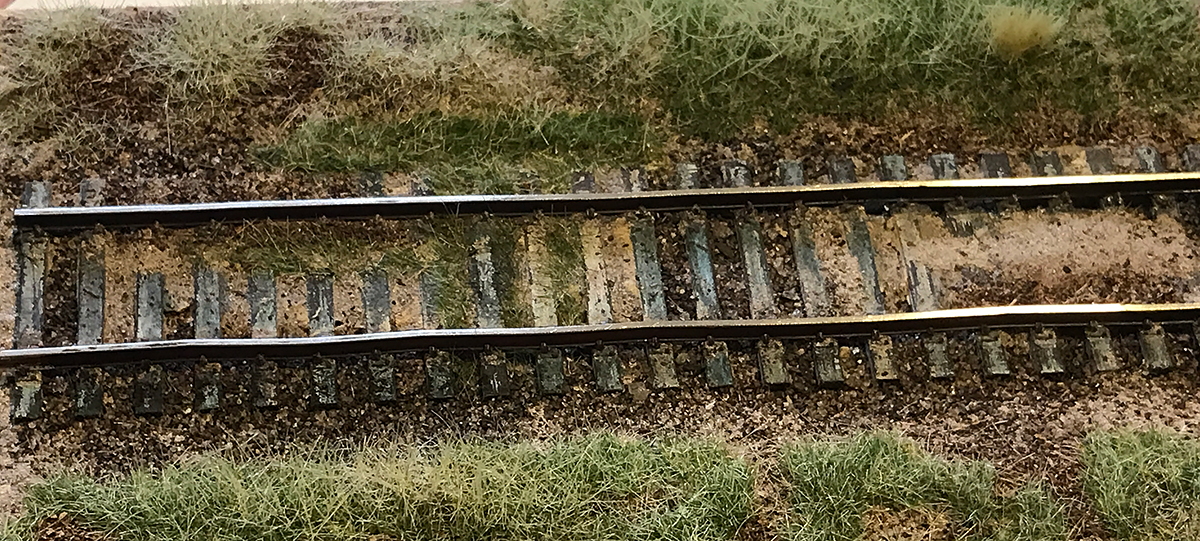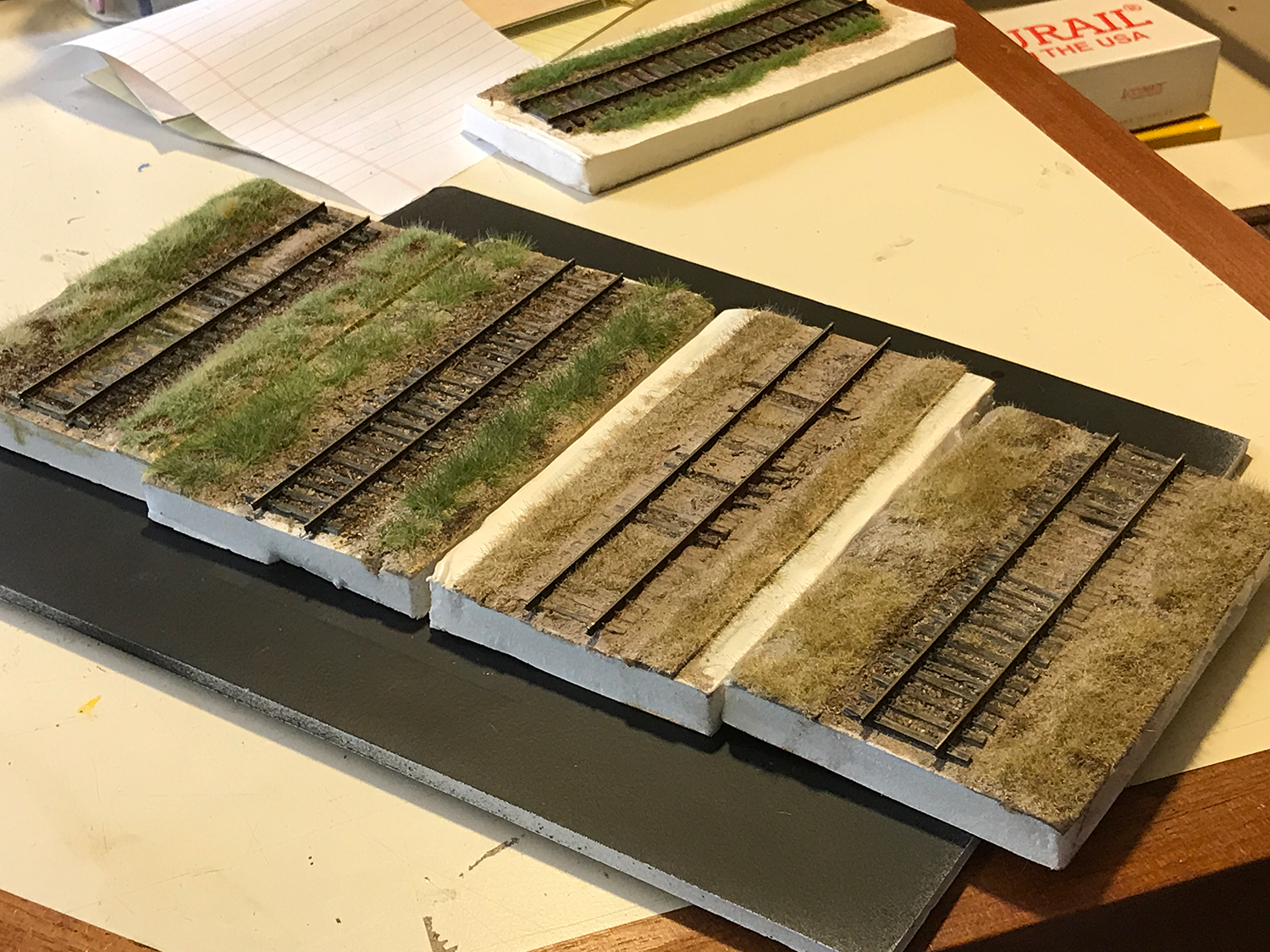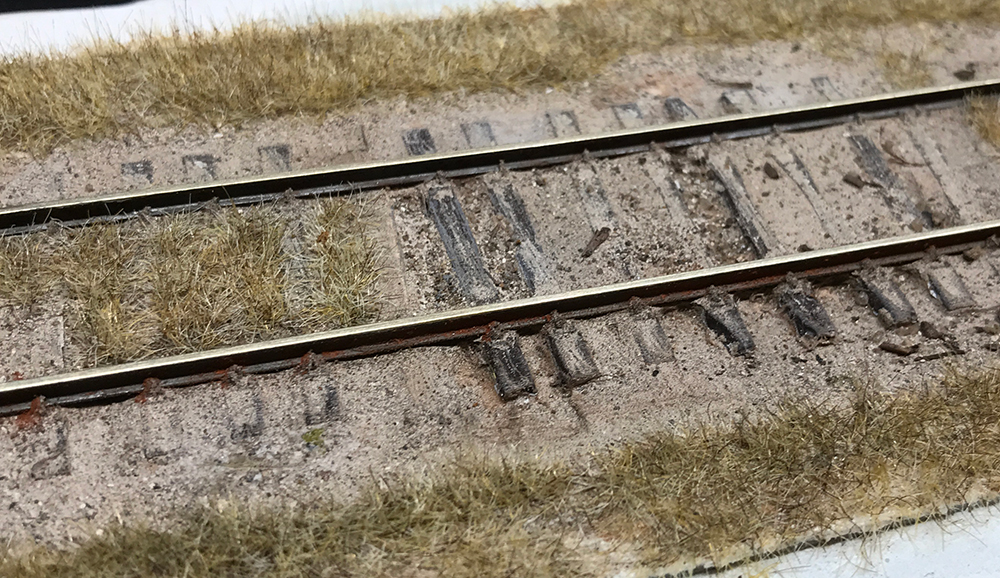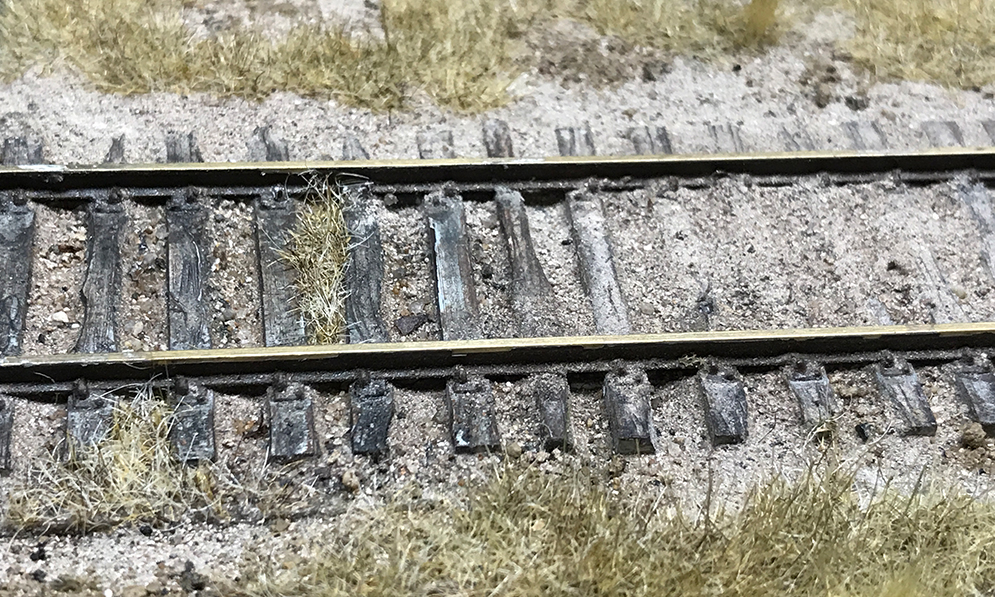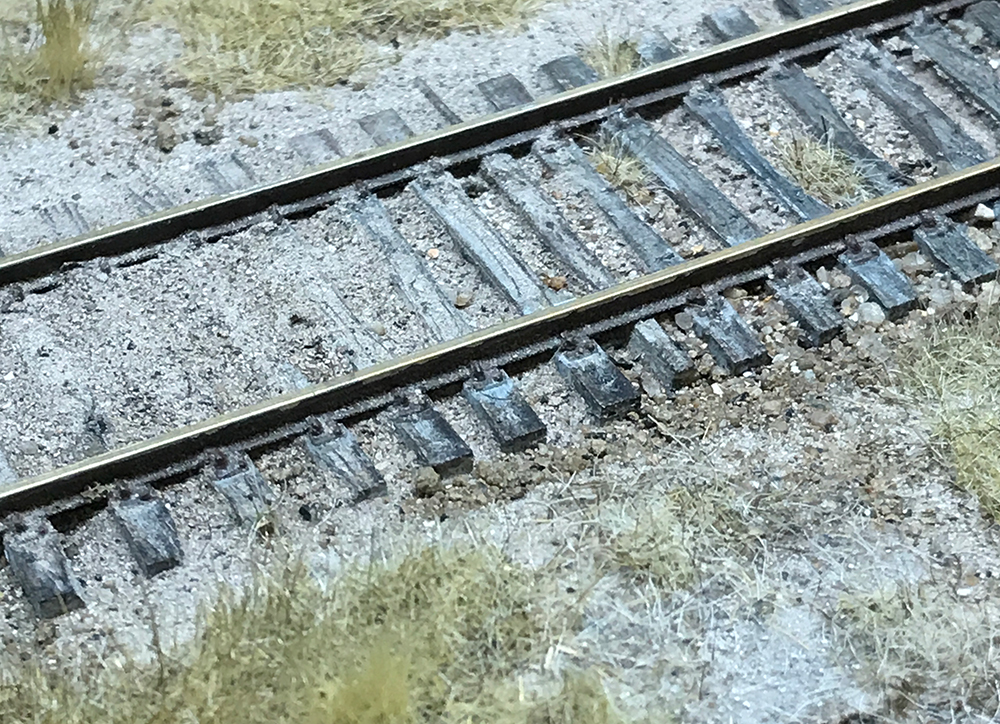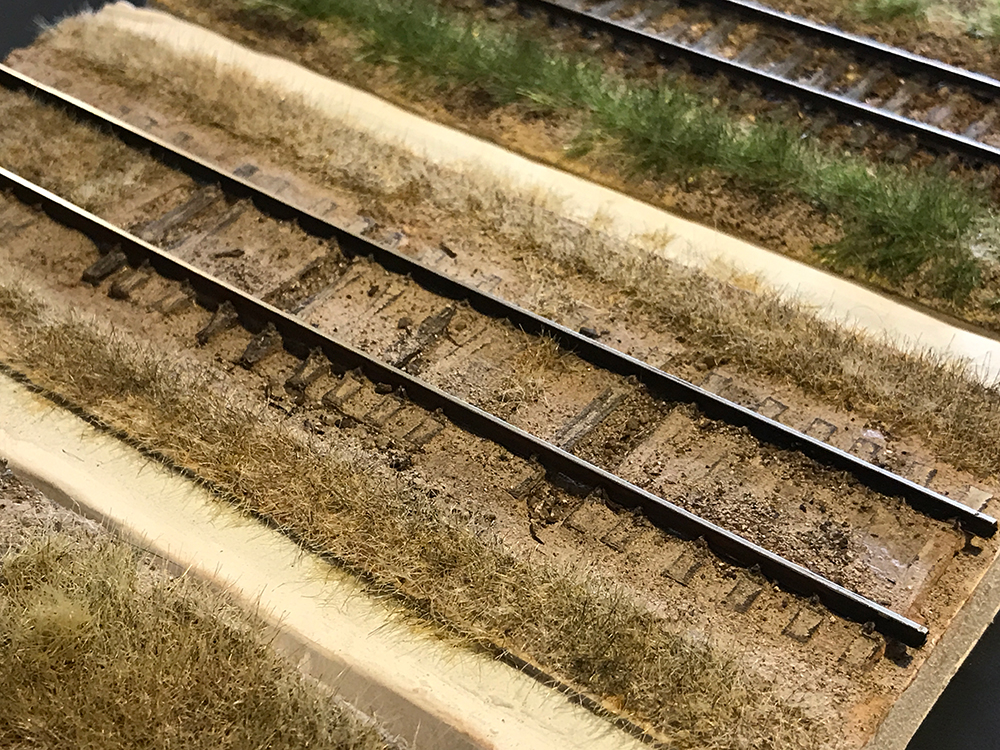Time for some grass. The secret is layers – short grass first then longer grass later. I’ve stopped using grass right out of the box and now mix different colors, lengths and brands (Heki, Silflor, Noch and more) to create a range of grass types.

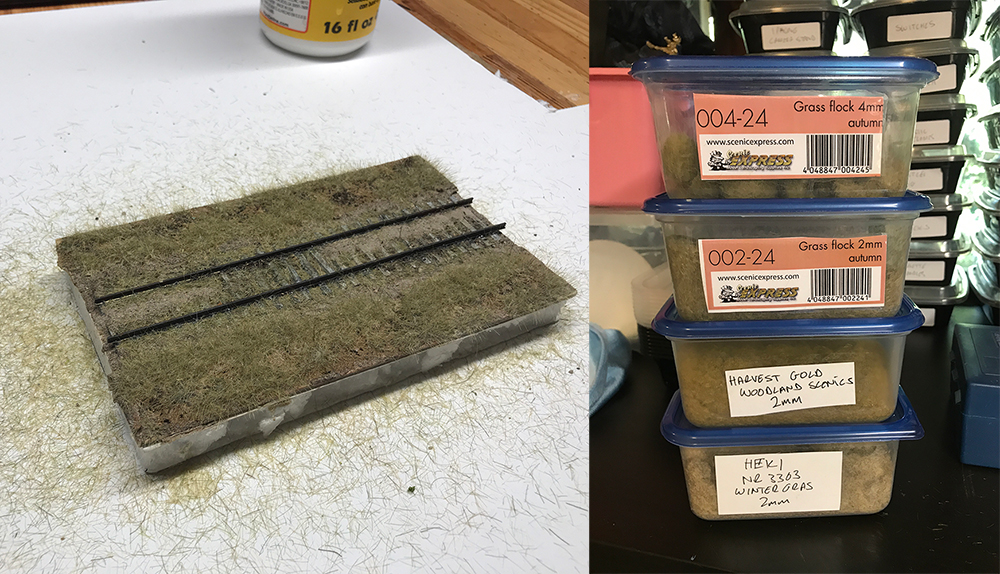

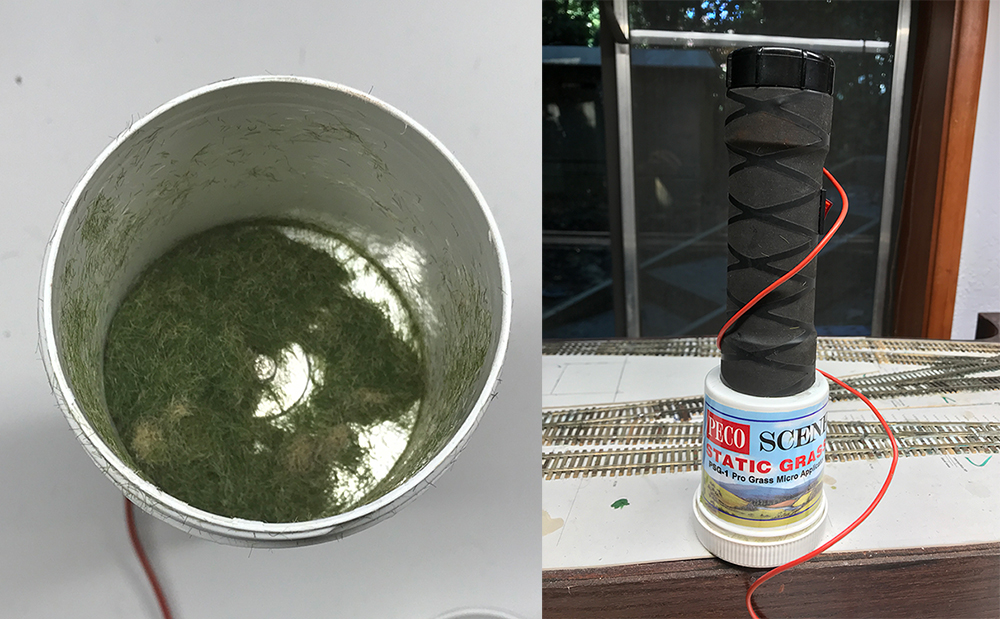
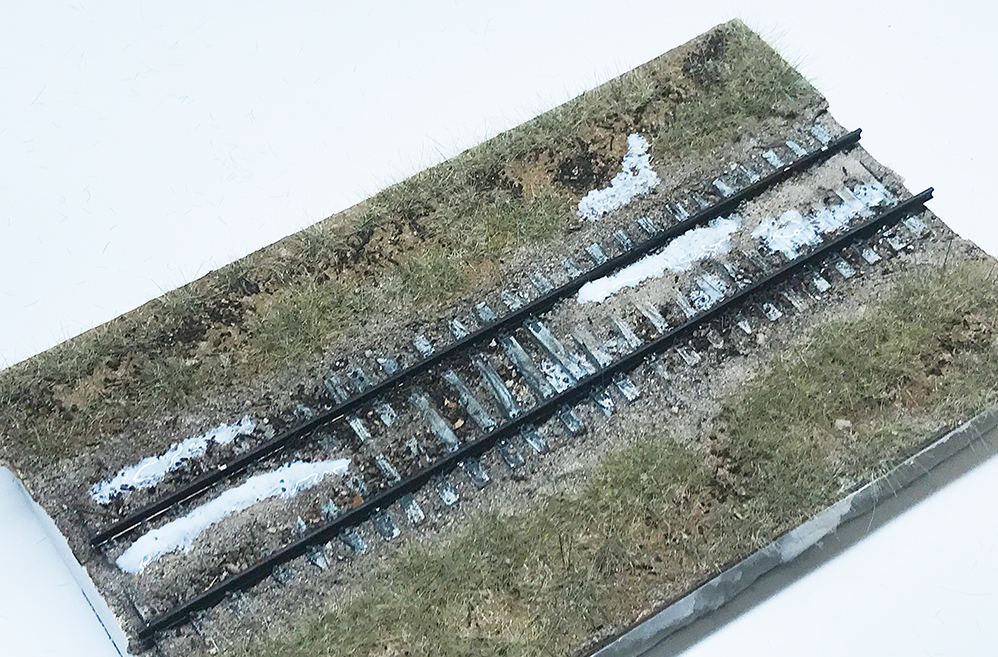
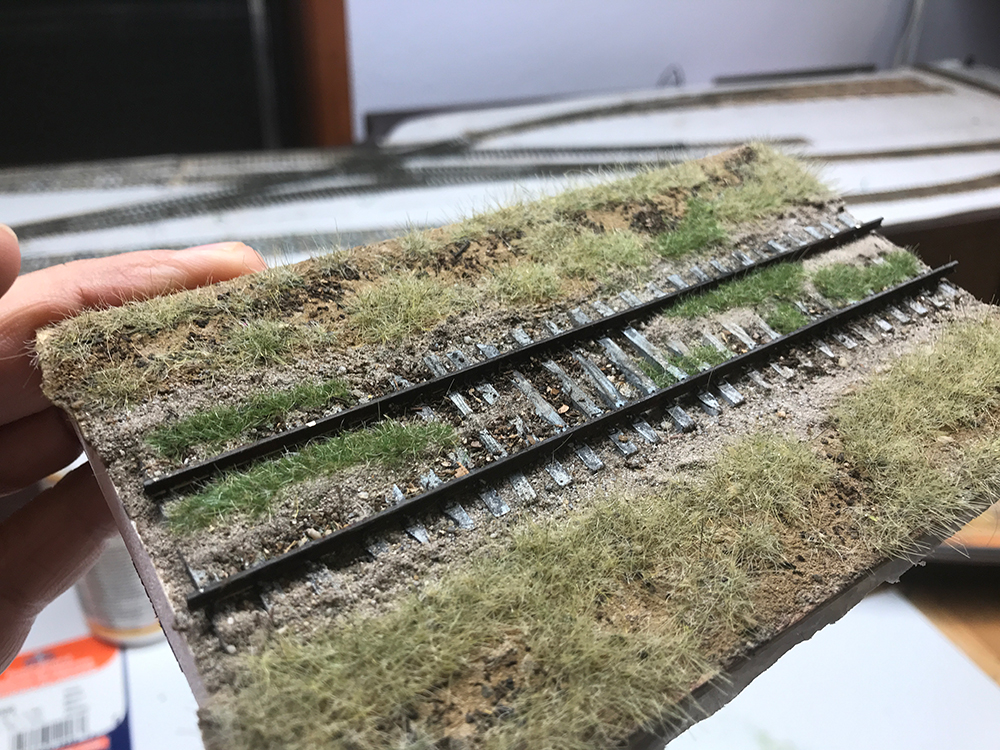

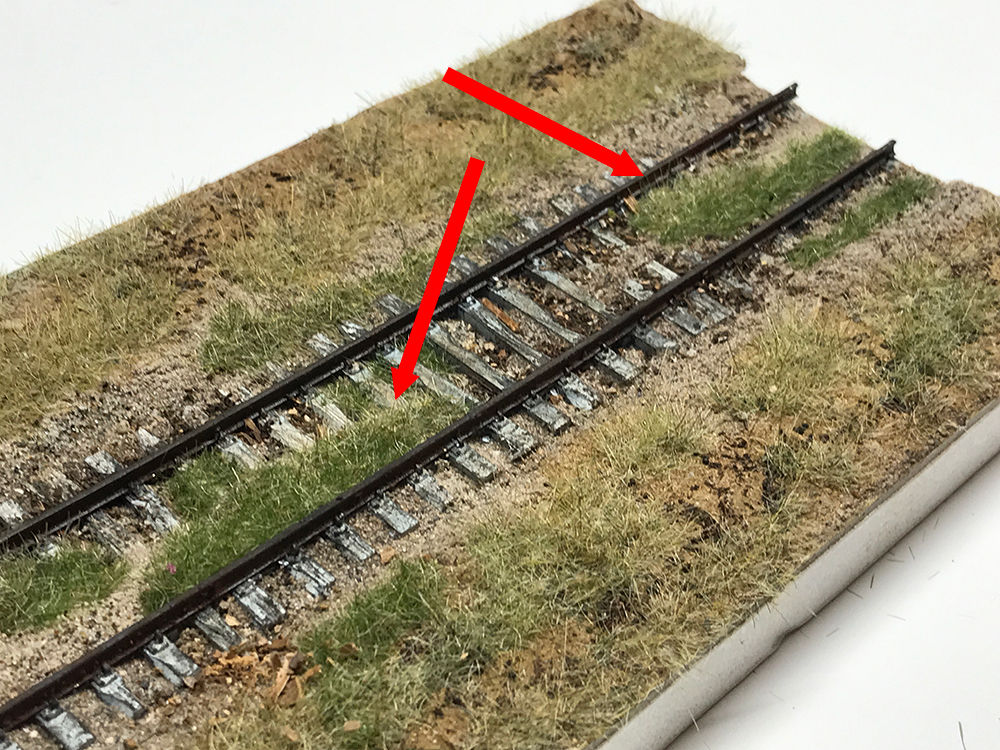
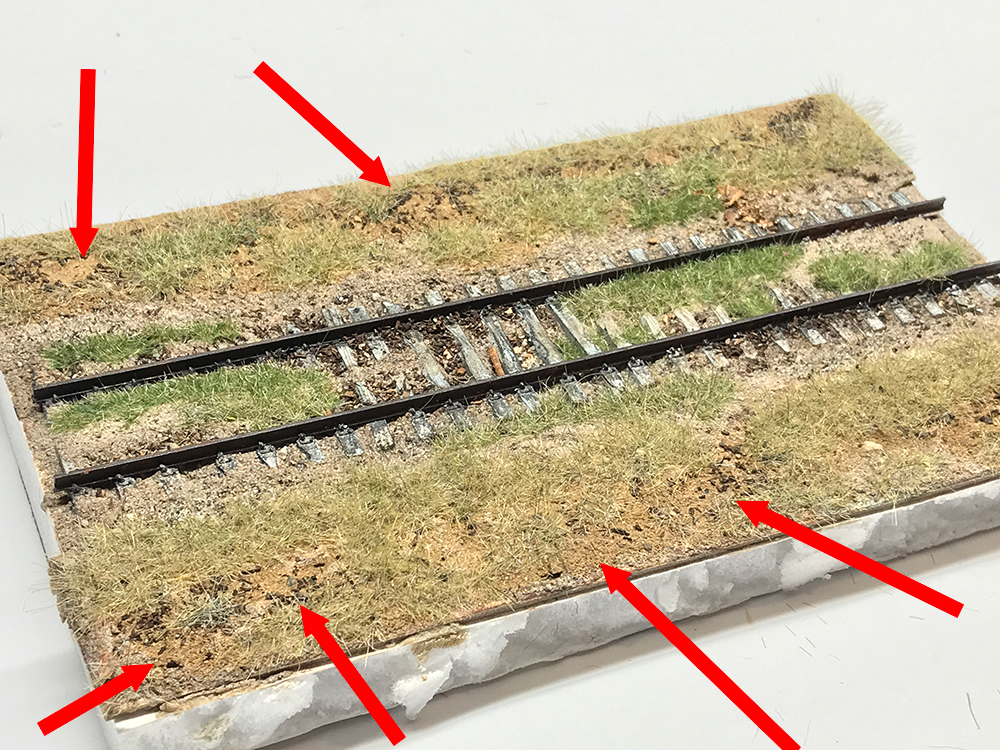
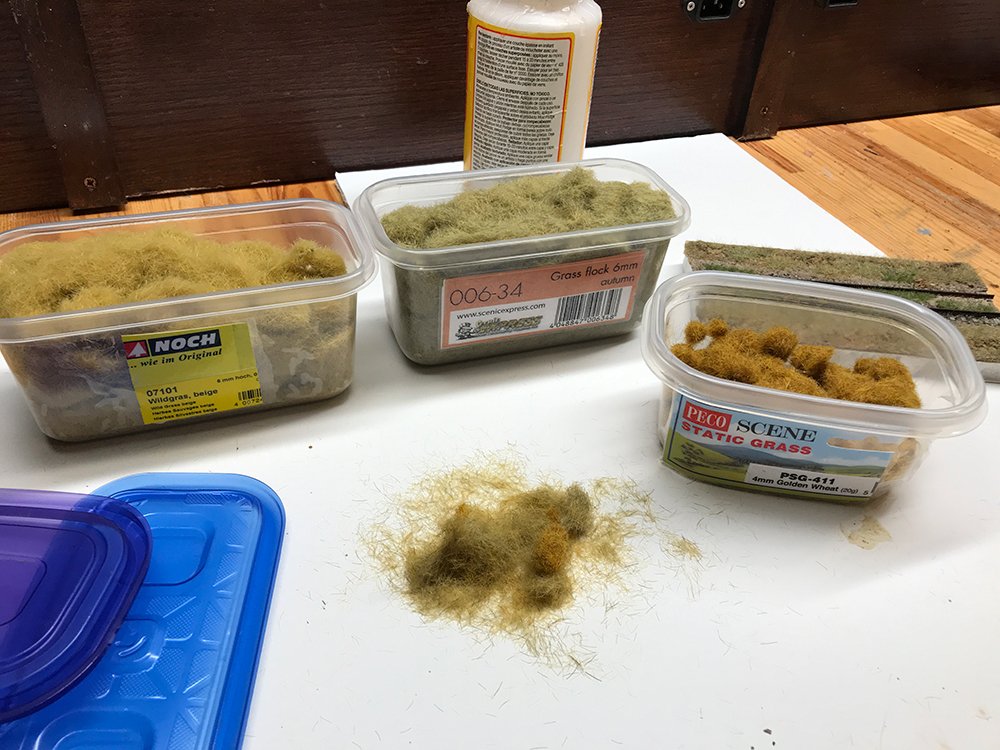
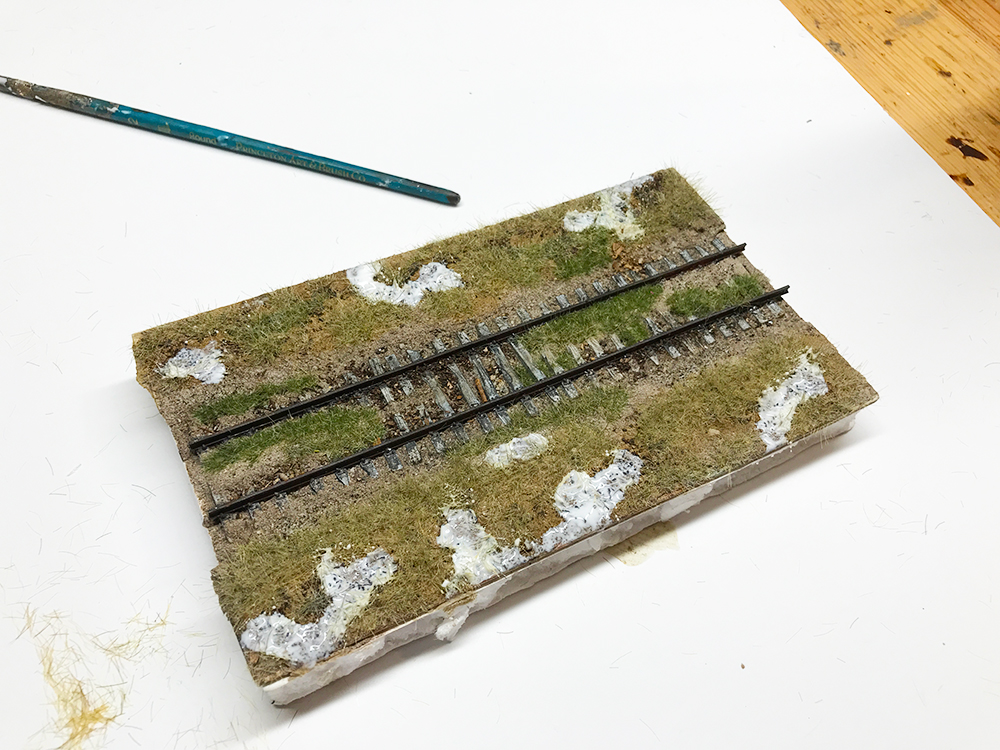
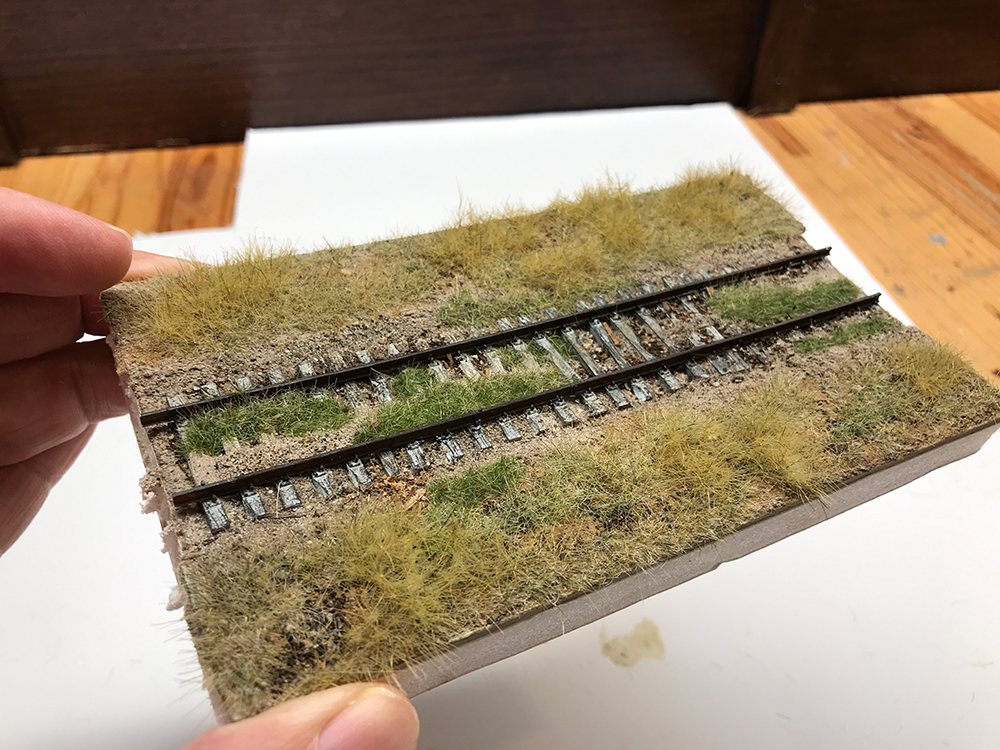
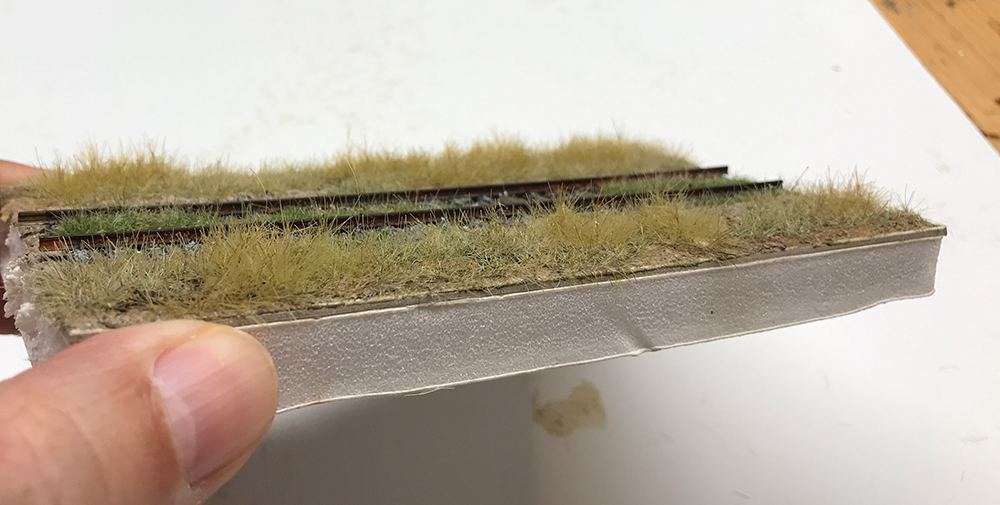
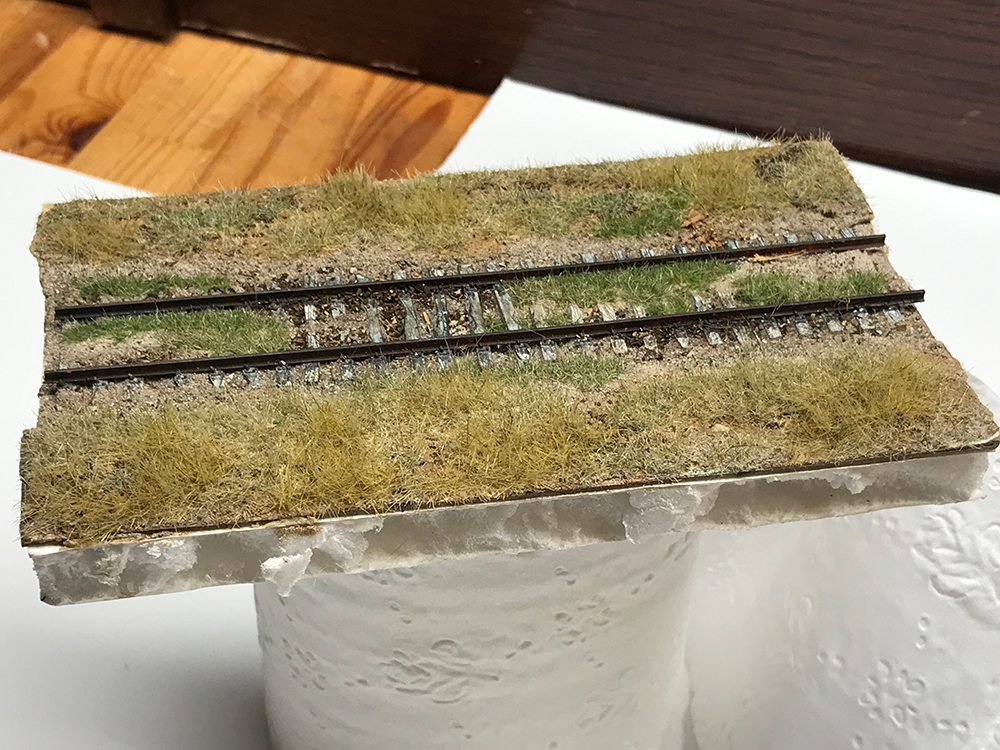
In conclusion.
These little studies are useful in gathering information and testing out ideas and methods. I consider them to be the ‘concept car’ of modeling: great for developing ideas and pushing the envelope a little but not necessarily for production on a layout (actually there is no reason you can’t do this work on a full layout). There are infinite ways to landscape track – this was just one free-styled idea – not wedded to any particular picture or scene I was trying to replicate. But it does show that there are options when modelling track – ballasted track doesn’t have to be the only option. I’m going to make good use of these studies on my next layout.
Final pics of this study:
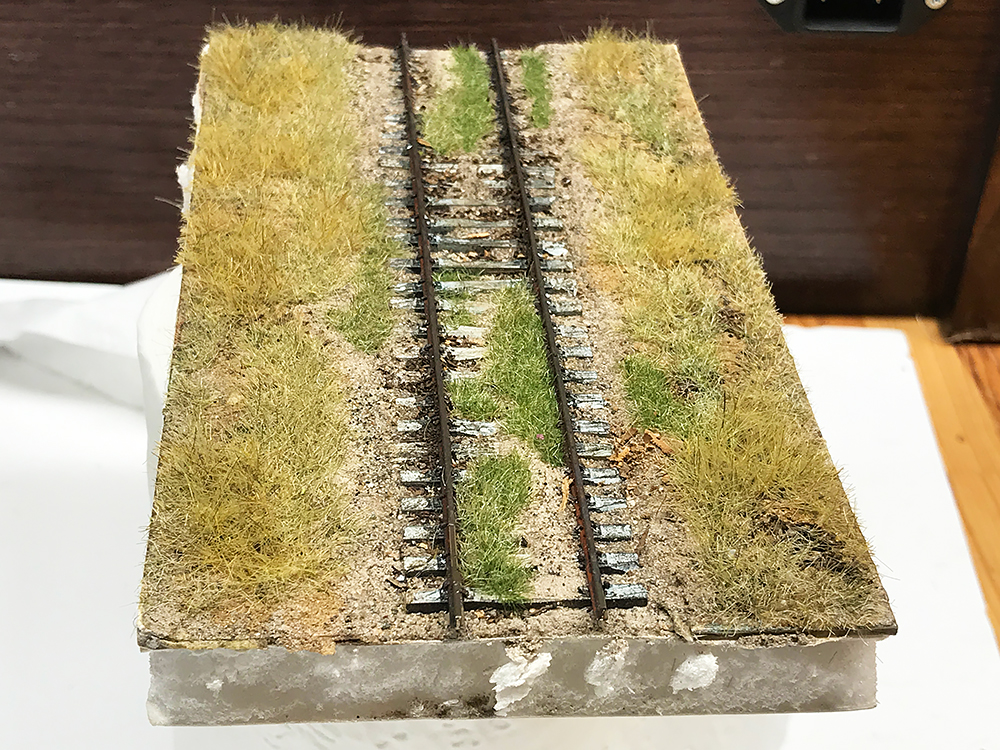
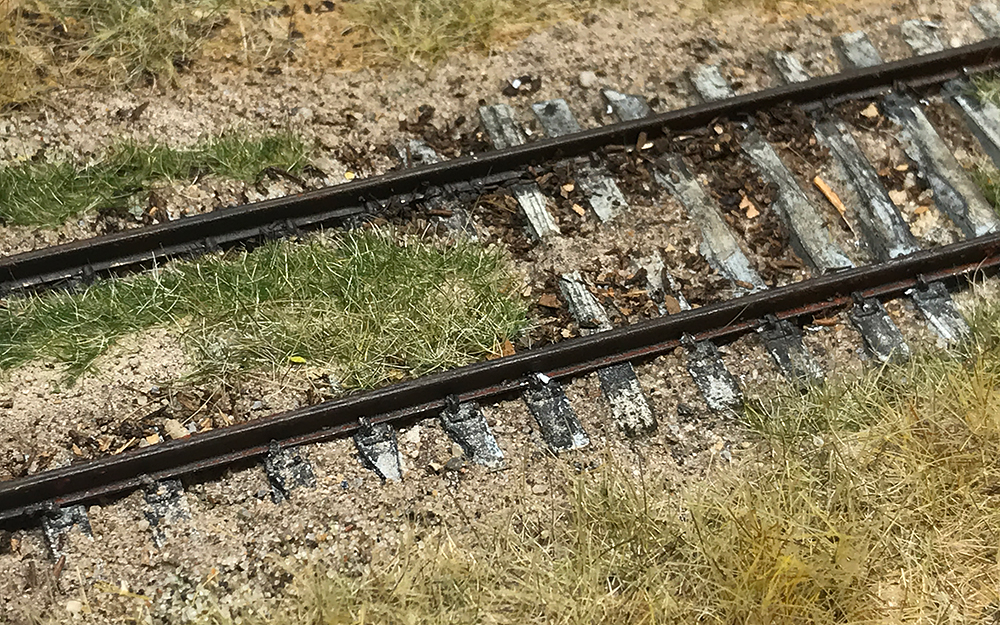
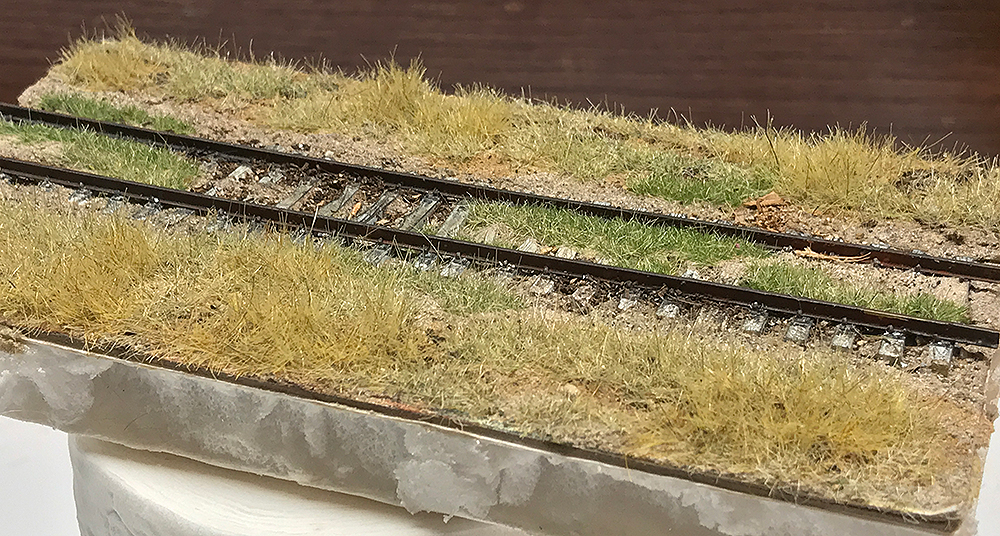
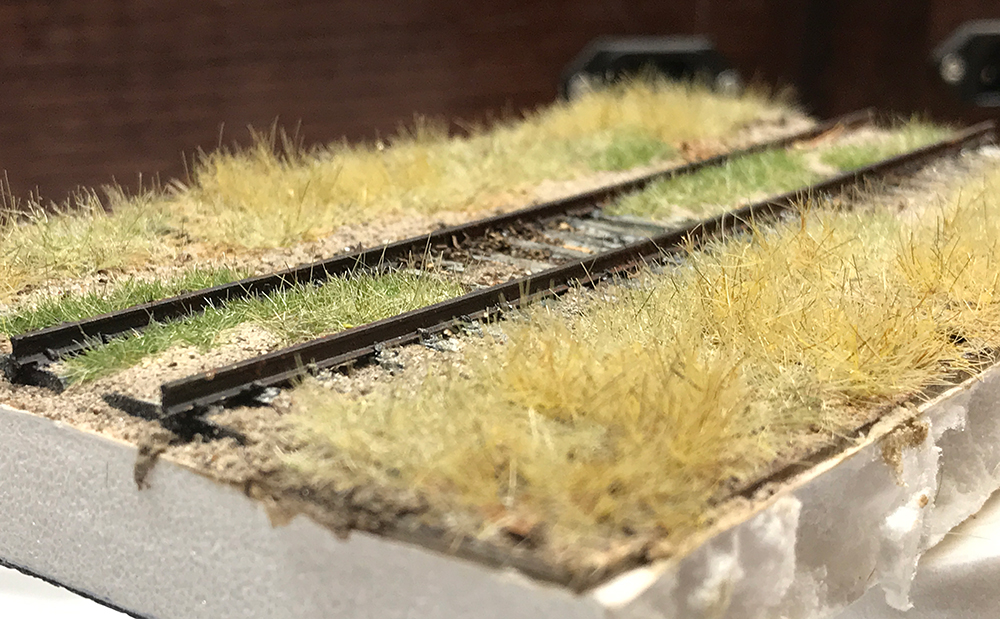
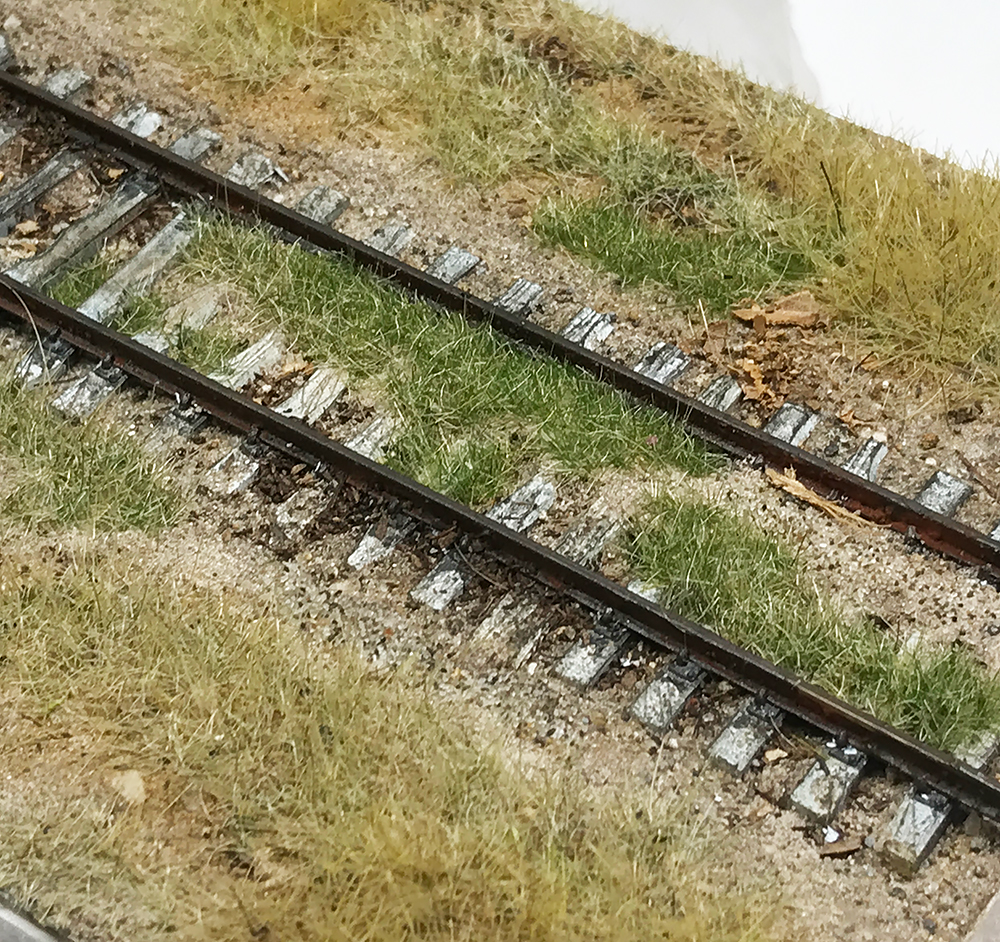
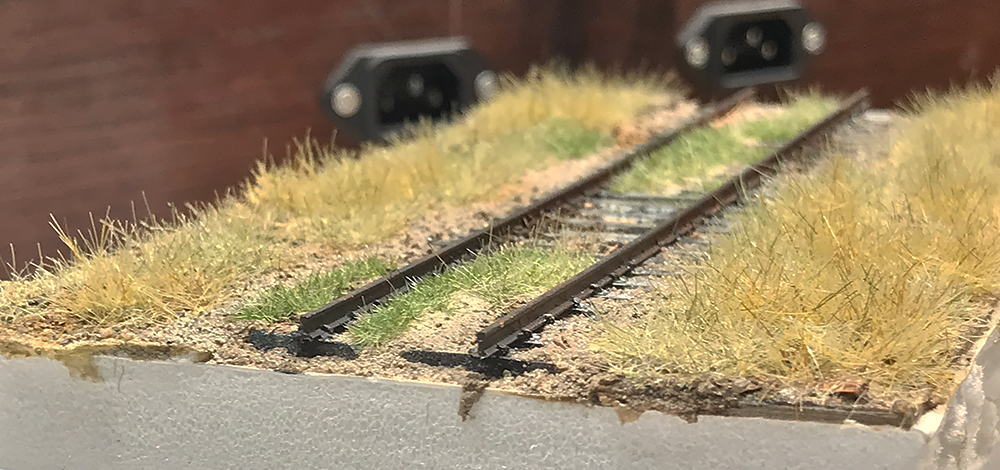
and pics of some earlier studies using a variety of different methods.
